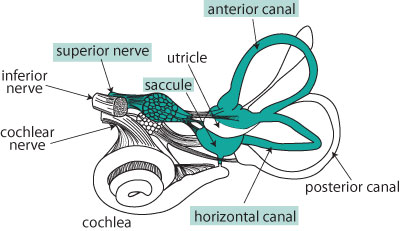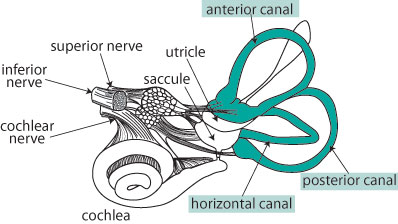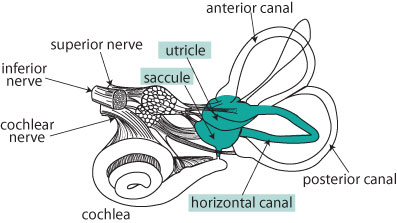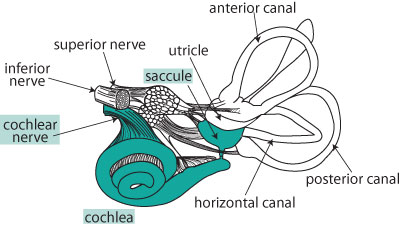Providing Comprehensive Diagnostics and Compassionate Care
Integrated care matters. So does building rapport and lasting results. Whether addressing an acute episode or chronic issue involving dizziness, vertigo or hearing, patients of all ages benefit from the inclusive medically-directed care provided by Newport-Mesa Audiology Balance & Ear Institute. We strive to enhance and complement each physician’s individualized care, not replace it.
Providing Comprehensive Diagnostics and Compassionate Care
Integrated care matters. So does building rapport and lasting results. Whether addressing an acute episode or chronic issue involving dizziness, vertigo or hearing, patients of all ages benefit from the inclusive medically-directed care provided by Newport-Mesa Audiology Balance & Ear Institute. We strive to enhance and complement each physician’s individualized care, not replace it.
Symptoms and Conditions Treated
Newport-Mesa Audiology Balance & Ear Institute is an established and renowned authority in the research, diagnosis, treatment and rehabilitation of dizziness, vertigo and balance disorders.
Our doctors are highly-trained vestibular audiologists, specializing in the sensory organs for hearing and balance: the inner ear. Utilizing leading-edge technologies, techniques and treatments, we partner with referring physicians to quickly provide a differential diagnosis and individualized treatment program to resolve patient symptoms and complaints.
Additionally, we are among the most distinguished and well-equipped audiological facilities in the U.S., providing hearing loss testing and treatment solutions for adult and pediatric populations.
Patients experiencing dizziness, vertigo and balance problems?
Symptoms Checklist:
- Unsteadiness without obvious explanation
- Suspected fall risk
- Acute or chronic dizziness or vertigo resulting in a fall
- Frequent falls with history of instability or disequilibrium
- Lightheadedness
- Normal electronystagmography (ENG) or videonystagmography (VNG) testing with continuing dizziness and imbalance
- Motion sickness
We treat dizziness, vertigo and balance conditions including:
- BPPV | Benign paroxysmal positional vertigo
- Labyrinthitis
- Migraine-associated vertigo with concurrent medical management
- Motion sensitivity and motion intolerance
- Vestibular neuritis
Patients experiencing hearing problems or hearing loss?
Symptoms checklist:
- Hearing difficulty
- Inability to clearly understand words, or sounds
- Ringing in the ears
We treat hearing and hearing loss-related conditions including:
- Conductive hearing loss
- Sensorineural hearing loss
- Mixed hearing loss
- Noise-induced hearing loss
- Age-related hearing loss
- Identifying ear infection and inflammation
- Tinnitus, including prevention and management strategies
PROTOCOLS, TESTING & REHABILITATION
Our doctors of audiology direct programs based on comprehensive diagnostics, treatment and care. Our programs are designed to compassionately and sensitively meet the individual needs of your patient.
Protocols
The Institute employs proven methodologies and protocols designed to support precise diagnosis and clinically-appropriate treatment. Exam, diagnostic testing, and evaluation results are promptly provided to referring physicians. After successfully completing treatment, patients are immediately returned to their referring doctor, along with a detailed report of treatment and therapies provided. All clinical outcomes are demonstrated and measurable.
Comprehensive Diagnostic Audiological Evaluation includes
- Video otoscopy
- Tympanometry
- Acoustic reflexes with ipsilateral and contralateral stimulation
- Otoacoustic emissions (OAEs)
- Pure tone audiometry
- Speech recognition thresholds
- Word recognition thresholds
Vestibular Testing
Hearing Testing
Rehabilitation
Returning your patients to normal activities is our priority. As a leader in the diagnosis, treatment and rehabilitation of dizziness, vertigo and balance disorders, we feature leading-edge breakthrough technologies. All non-invasive.
Our protocols include:
- Advanced Vestibular Treatment® (AVT)
- Epley Omniax® Chairs for BPPV treatment
- The only private practice in the U.S. with three chairs, and among only 20 practices worldwide that features this proven technology.
- Advanced and unduplicated technology successfully treats all six semi-circular canals of the inner ear using 360° rotation.
- Neuromonics™ Tinnitus Treatment
- Lyric™ Extended Wear Device
- Opn™ Internet-capable Hearing Device
- Hearing aid evaluation and rehabilitation
- Custom Noise Protection
WHY ADVANCED VESTIBULAR TREATMENT
?


We are vestibular diagnostic, treatment and rehabilitation experts. We specialize in successful treatment programs designed to return your patients to maximum activity levels as quickly and comfortably as possible.
Dr. Mango and his team have successfully treated more than 50,000 patients for dizziness, vertigo, balance and inner-ear disorders using proprietary, medically-advanced technology and techniques, including Advanced Vestibular Treatment® (AVT).
To date more than 90% of all Institute patients have demonstrated measurable, clinical improvement following our personalized dizziness therapy with a treatment approach far superior to traditional vestibular rehabilitation therapy (VRT).
AVT is our highly effective, customized therapeutic approach that treats those patients with vestibular balance system disorders. AVT is designed as a clinic-directed therapy approach. It may be complemented with an accompanying customized home-based exercise program that is patient-motivated.
Why does AVT work? AVT involves teaching the brain to correct itself. It takes full advantage of the brain’s natural plasticity and ability to restore symmetry and increase sensitivity. Our goal is to improve patients’ overall stability and motor control by enhancing the vestibulo-ocular reflex (VOR) – a reflexive eye movement that stabilizes images on the retina during head movement. Studies show that individualized treatment is significantly more effective in resolving symptoms than commonplace treatments, such as medication or general balance exercises.
Successful treatment returns patients to maximum activity levels as quickly and comfortably as possible.
Research serves an integral role in Newport-Mesa Audiology Balance & Ear Institute’s history. It validates our ability to consistently achieve a true differential diagnosis. And new research findings, once affirmed, continue to raise our bar higher. The result? Providing the most clinically appropriate treatment possible.
Additional innovative research and case studies are ongoing.
Institute Research
- Lyric™ Extended Wear Hearing Device Study
- Evaluation of vestibular evoked myogenic potentials (VEMPs) in a clinical setting
- Different vestibular therapy approaches using the NeuroKinetic Ocular Therapy Chair (NOTC)
PHYSICIAN LIAISON
Our goal is to return patients to their optimal level of activity using the most effective methods available. To do so successfully, we encourage an alliance involving patient, family and referring physician. Maintaining and nurturing an open line of communication is crucial to build, support and serve your patient needs. We are here to assist you, and we welcome your feedback.
If you have questions about our clinical services, prefer to arrange a chat with our doctors, or desire a visit from our liaison, please contact us.
As a referring physician or referring physician staff professional, please be our guest for personalized clinical tour of our Newport Beach location. To arrange, please contact Michael Williams @ (949) 432-5219 or Mike@dizziland.com

We are located in an easy-to-access location in Orange County, California.
NEWPORT BEACH
500 Old Newport Blvd, Suite 101
Newport Beach, CA 92663

 This test provides critical information regarding the integrity of the saccule and inferior vestibular nerve. The saccule is very close to the middle ear and thus is sensitive to high-intensity sound.
This test provides critical information regarding the integrity of the saccule and inferior vestibular nerve. The saccule is very close to the middle ear and thus is sensitive to high-intensity sound.


 This three-part evaluation assesses the inner ear and central functions of the motor system.
This three-part evaluation assesses the inner ear and central functions of the motor system.
 The advanced Neuro Kinetics rotational chair is the gold standard for quantifying bilateral vestibular system weakness, independent utricle function and allows the audiologist to thoroughly assess vestibular compensation. The otolith system consists of the utricles and saccules, which are the sensory organs in the inner ear that convert linear acceleration into an electrical code the brain can use. The utricle is responsible for sensing horizontal acceleration. Following stimulation of one of the utricles, the patient perceives that the environment is tilting. This is assessed utilizing unilateral centrifugation (UC) and off axis vertical rotation (OVAR) testing.
The advanced Neuro Kinetics rotational chair is the gold standard for quantifying bilateral vestibular system weakness, independent utricle function and allows the audiologist to thoroughly assess vestibular compensation. The otolith system consists of the utricles and saccules, which are the sensory organs in the inner ear that convert linear acceleration into an electrical code the brain can use. The utricle is responsible for sensing horizontal acceleration. Following stimulation of one of the utricles, the patient perceives that the environment is tilting. This is assessed utilizing unilateral centrifugation (UC) and off axis vertical rotation (OVAR) testing.
 This is a modification of the standard auditory brainstem response (ABR) test. CHAMP is used to identify cochlear hydrops or Meniere’s disease. The standard ABR is measured with a click stimulus that activates the entire cochlea. With CHAMP, the click stimulus is mixed with increasing amounts of highpass masking noise. Resulting waveforms provide detailed information on basilar membrane response, aiding in accurate differential diagnosis.
This is a modification of the standard auditory brainstem response (ABR) test. CHAMP is used to identify cochlear hydrops or Meniere’s disease. The standard ABR is measured with a click stimulus that activates the entire cochlea. With CHAMP, the click stimulus is mixed with increasing amounts of highpass masking noise. Resulting waveforms provide detailed information on basilar membrane response, aiding in accurate differential diagnosis.